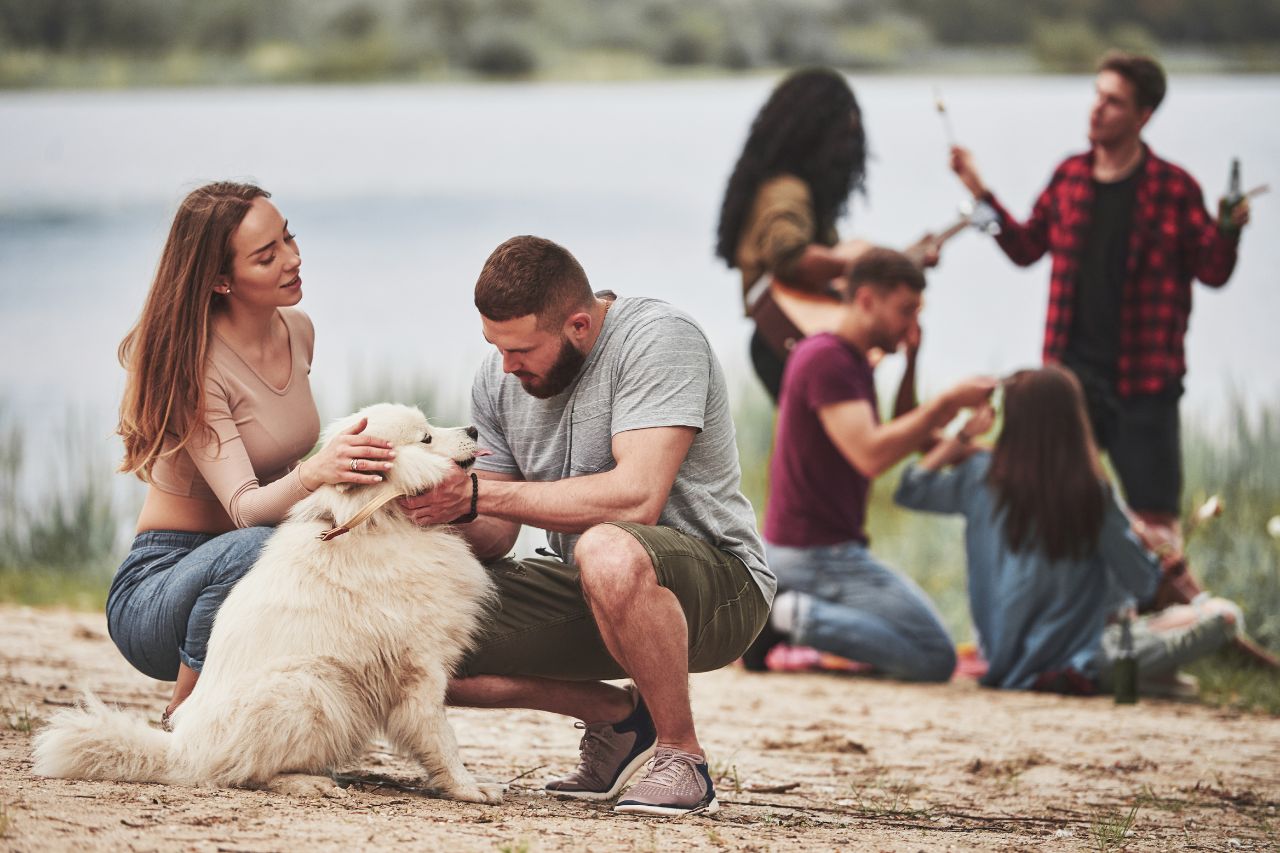

Dogs have held a special place in human hearts for thousands of years. Often called “man’s best friend,” these loyal companions have been by our sides through thick and thin. This article explores the deep bond between humans and dogs, tracing their history, understanding their loyalty, and looking at their roles in our lives today.
King Frederick II of Prussia, known for his love of dogs, famously referred to his Italian Greyhound, Biche, as his best friend. This relationship highlights how dogs have been cherished companions throughout history.
In 1870, lawyer George Graham Vest delivered a powerful eulogy for a dog named Old Drum, who had been killed. He stated, “I would win the case or apologize to every dog in Missouri.” This speech emphasized the deep bond between humans and dogs, showcasing their loyalty and significance in our lives.
The philosopher Voltaire also recognized the unique connection between humans and dogs. He believed that dogs were not just pets but companions that offered unconditional love and loyalty. This perspective has influenced how society views dogs, reinforcing their status as man’s best friend.
Dogs have been by our side for thousands of years, providing companionship and protection. Their loyalty is a reflection of the bond we share, which has only grown stronger over time.
In summary, the historical significance of dogs as man’s best friend is evident through notable figures and their relationships with these loyal animals. From kings to philosophers, the appreciation for dogs has shaped our understanding of loyalty and companionship.
The journey of dogs from their wild ancestors, wolves, to the loving companions we know today is fascinating. The human–canine bond began when early humans and wolves formed a partnership. This relationship was beneficial for both sides: humans provided food and shelter, while dogs offered protection and companionship. Over thousands of years, this bond grew stronger, leading to the loyal pets we cherish today.
The early relationship between humans and dogs was based on mutual benefits. Here are some key points:
As time went on, humans began to selectively breed dogs for specific traits. This led to the development of various breeds suited for different tasks. For example:
The bond between humans and dogs is not just about loyalty; it’s a deep emotional connection that has evolved over time.
This evolutionary journey highlights how intertwined our lives have become with those of our canine friends, making them truly deserving of the title “man’s best friend.”
Dogs are known for their unwavering loyalty to humans, forming strong emotional bonds that often feel like family ties. This loyalty can be seen in various behaviors that dogs exhibit towards their owners.
Dogs express their loyalty in many ways, including:
Training and socialization play a crucial role in fostering loyalty. A well-trained dog is more likely to:
Dogs are renowned for their unwavering loyalty and companionship. They form strong emotional bonds with their owners, showering them with affection and comfort.
In conclusion, the loyalty of dogs is a complex mix of emotional attachment, learned behaviors, and the bond they share with their humans. Understanding these factors can help us appreciate why dogs truly deserve the title of “man’s best friend.”
 Dogs have played a significant role in human culture throughout history. They are often seen as symbols of guidance, protection, and loyalty. This perception has evolved over time, especially from the 18th century onward, when dogs began to be viewed more as companions than just working animals.
Dogs have played a significant role in human culture throughout history. They are often seen as symbols of guidance, protection, and loyalty. This perception has evolved over time, especially from the 18th century onward, when dogs began to be viewed more as companions than just working animals.
Dogs have been depicted to symbolize guidance, protection, loyalty, fidelity, faithfulness, alertness, and love. Their presence in our lives reflects a deep emotional connection that transcends mere companionship.
Dogs today play vital roles in helping people with disabilities and mental health issues. Service dogs assist individuals with mobility challenges, while therapy dogs provide comfort in hospitals and schools. These dogs are trained to perform specific tasks, such as:
In law enforcement, dogs are essential partners. They help in:
Military dogs serve alongside soldiers, often in dangerous situations, showcasing their bravery and loyalty. These dogs are trained to protect and assist, making them invaluable assets.
Many families consider dogs as part of their family. They offer companionship and emotional support, which can lead to better mental health. Research shows that having a dog can:
Dogs are evolving to fit the modern lives of humans. They have shifted from being purely functional animals to beloved companions, providing emotional and physical support in our daily lives.
In summary, dogs today are not just pets; they are integral members of society, fulfilling roles that enhance the lives of many.

Owning a dog is a big commitment that comes with many challenges and responsibilities. Understanding legal responsibilities as a dog owner is crucial to ensure a safe and happy environment for both you and your pet.
Owning a dog is not just about companionship; it requires dedication, time, and a commitment to their well-being.
By being aware of these challenges and responsibilities, you can ensure a fulfilling relationship with your furry friend.
The future of our relationship with dogs looks promising, especially with new medical breakthroughs. Advances in veterinary medicine are making it easier to keep our furry friends healthy. Some key developments include:
Technology is also changing how we care for dogs. Smart devices are helping owners monitor their pets’ health and behavior. Here are some examples:
As society changes, so do our views on dogs. They are increasingly seen as family members rather than just pets. This shift is leading to:
The bond between humans and dogs is becoming stronger, as scientists have discovered that human and dog brain waves synchronize during social interactions, offering new insights into our unique bond.
In conclusion, the future of human-canine relationships is bright, filled with advancements that will enhance our lives together. We can look forward to a deeper connection with our loyal companions as we embrace these changes.
In summary, dogs truly are a man’s best friend. Their loyalty and love make them special companions. Whether they are playing, protecting, or just being there, dogs enrich our lives in countless ways. They stand by us through good times and bad, reminding us of the importance of friendship. As we continue to share our lives with these amazing animals, we should cherish the bond we have with them and recognize the joy they bring to our everyday lives.
Dogs are called man’s best friend because they have been loyal companions to humans for thousands of years. They provide friendship, protection, and unconditional love.
Dogs evolved from wolves and started living alongside humans. Early humans offered food and shelter, while dogs provided safety and companionship.
Dogs show loyalty by staying close to their owners, protecting them, and being happy to see them. They often follow their owners around and want to be near them.
Dog owners need to train their pets, provide regular vet check-ups, and ensure they get enough exercise and proper food.
Yes, dogs can sense human emotions. They often respond to their owners’ feelings, whether it’s happiness or sadness.
The bond between dogs and humans will likely grow stronger, with advancements in veterinary care and new ways to train and care for dogs.

Monday - Thursday 7 AM - 5 PM PST
admin@selfstalker.com support@selfstalker.com